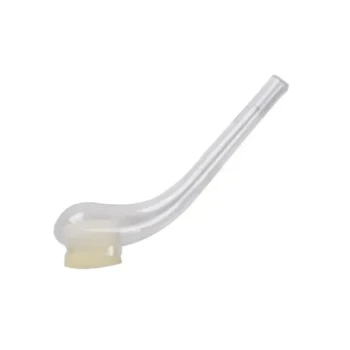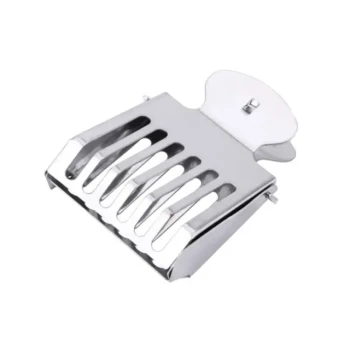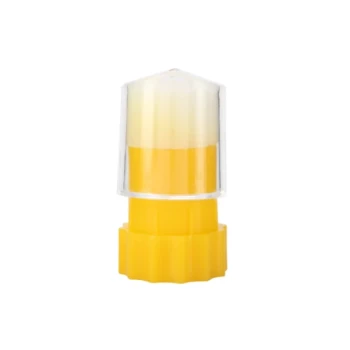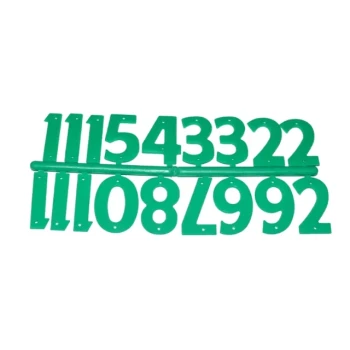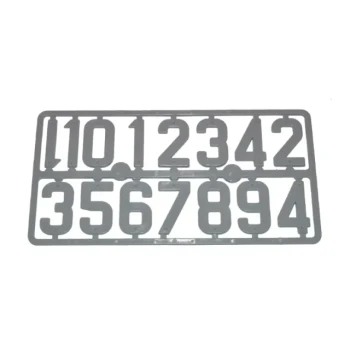When splitting a hive with queen cells, the most reliable method is to select the single largest and most developed cell, move it with its frame to the new split, and decisively destroy all other queen cells. This deliberate selection prevents the chaos of dueling virgin queens and gives your new colony the strongest possible start.
The core principle is simple: you are replacing nature's lottery with a conscious management decision. Instead of letting the bees raise multiple rival queens, you act as the quality control, selecting the best candidate and eliminating the competition to ensure a stable and productive new hive.
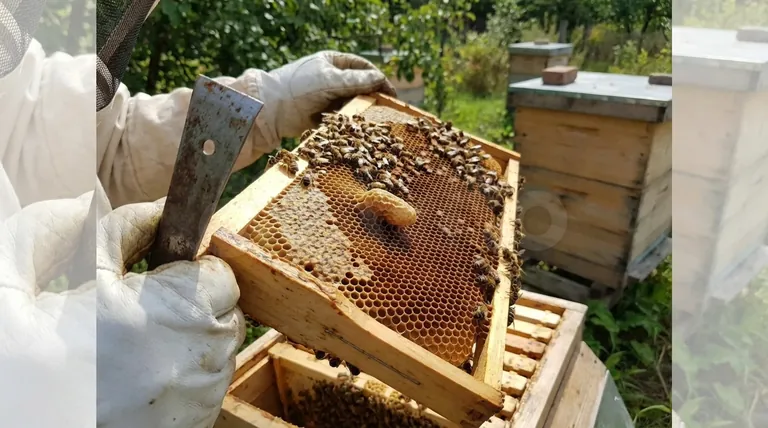
The Principle of Deliberate Selection
When a colony prepares to swarm or replace its queen, it creates multiple queen cells as a form of insurance. Your job during a split is to override this insurance plan with a direct, intentional choice.
Why One Cell is Better Than Many
Leaving multiple queen cells in a split is a gamble. The first virgin queen to emerge will systematically hunt down and kill her un-emerged sisters.
While this is a natural process, it introduces unnecessary risk. A smaller, less vigorous queen might emerge first and kill a more promising successor. By selecting the single best cell, you control the outcome.
Identifying the Best Queen Cell
Look for a cell that is large, elongated, and well-sculpted with a peanut-like texture. These are signs that the larva inside was well-fed and is developing into a strong queen.
A capped cell is further along in development and is generally a safer bet. Cells located on the face of the brood comb are often of higher quality than those built hastily along the bottom of a frame.
The Critical Step: Moving the Cell
A queen cell is extremely fragile. The safest way to move one is to move the entire frame it is built on.
Place this frame in the center of the new split box, surrounded by frames of brood and resources. This ensures the cell is kept warm and cared for by the nurse bees until the queen emerges.
Managing the "Extra" Queen Cells
Once you've selected your primary cell, you must deal with the rest. Ignoring them is the most common mistake and can undermine the success of your split.
The Need to Cull Remaining Cells
To prevent rival queens from emerging, you must destroy the remaining cells. A firm poke to the side of the cell with your hive tool is sufficient.
It is critical to be thorough. Check every brood frame in both the original hive and the new split, as a single missed cell can lead to a fight between virgin queens or an unintended "afterswarm."
Using Cells for Additional Splits
If your goal is to expand your apiary, each viable queen cell can be the foundation of a new colony.
You can make several small "nucleus" colonies (nucs), ensuring each has one good queen cell, a frame of brood, a frame of food, and enough bees to care for them.
Creating a "Queen Bank"
For a more advanced approach, you can save extra cells as backups. Carefully place a capped cell into a queen roller cage.
This cage protects the cell and the emerged virgin queen. You can then place these cages in a strong, queenless "bank" colony, giving you a supply of queens in case another hive's queen fails to mate or is lost.
Understanding the Trade-offs and Risks
While selecting a single cell is the most reliable method, it's important to understand the potential pitfalls.
The Risk of Damaging Your Chosen Cell
Queen cells, particularly uncapped ones containing young larvae, are delicate. Rough handling, jarring the frame, or exposing the cell to cold temperatures can easily kill the developing queen. Always handle the frame with care.
The Gamble of "Letting the Bees Decide"
Some beekeepers prefer to leave two good cells, assuming the bees will sort it out. This can work, but it relinquishes control. You risk the queens injuring each other during a fight or a less desirable queen winning the battle.
The Danger of Missing a Cell
The biggest risk is human error. It is very easy to miss a small queen cell tucked away in a corner of a frame. A missed cell defeats the purpose of selection and can lead to the exact problems you were trying to avoid.
Making the Right Choice for Your Goal
Your strategy for handling queen cells should be guided by your primary objective for the split.
- If your primary focus is creating one strong, successful split: Select the single best queen cell, move it with its frame to the new hive, and meticulously destroy all other cells.
- If your primary focus is maximizing colony numbers: Use each viable queen cell to start its own small nucleus colony, ensuring each has adequate bees and resources.
- If your primary focus is creating insurance and backups: Carefully place extra capped cells into roller cages to create a "queen bank" for future needs.
By managing queen cells with intention, you are not just splitting a hive; you are actively guiding the success of your future colonies.
Summary Table:
| Action | Purpose | Key Consideration |
|---|---|---|
| Select the Best Cell | Choose the strongest queen candidate. | Look for large, well-sculpted, capped cells on the comb face. |
| Move the Entire Frame | Safely relocate the fragile queen cell. | Keeps the cell warm and protected by nurse bees. |
| Destroy Other Cells | Prevent rival queens and chaos. | Be thorough; check all frames to avoid missed cells. |
| Alternative: Create Nucs | Maximize colony expansion. | Each viable cell can start a new nucleus hive with adequate resources. |
Ready to build a stronger, more productive apiary?
Successful beekeeping starts with the right equipment. At HONESTBEE, we supply commercial apiaries and beekeeping equipment distributors with the high-quality, durable supplies needed to manage splits and grow thriving colonies efficiently through our wholesale-focused operations.
Contact our experts today to discuss your specific needs and discover how our products can support your beekeeping success.
Visual Guide
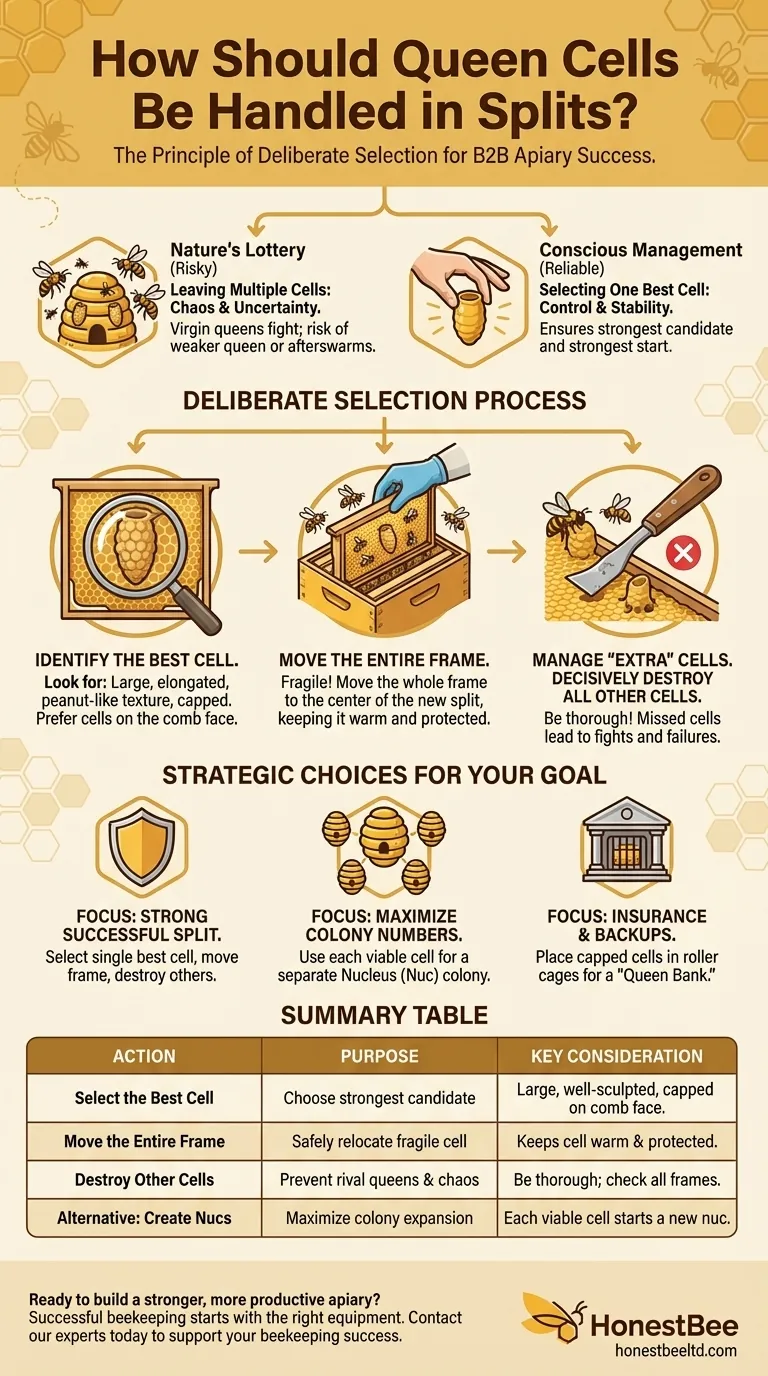
Related Products
- Brown Nicot Queen Cell Cups for Breeding Queen Bees Beekeeping
- Clear Black Plain Polystyrene Queen Bee Grafting Cell Cups No Lug for Bee Queen Cup
- Plastic Chinese Queen Grafting Tool for Bee Queen Rearing
- Stainless Steel Queen Grafting Tool for Beekeeping and Bee Queen Grafting
- Double Head Beekeeping Grafting Tools for Beekeepers
People Also Ask
- What is the benefit of inducing supersedure by giving a queenright colony a protected queen cell? A Seamless Requeening Method
- How many cells are given to a nucleus? Understand the One-to-One Rule in Cell Biology
- What should be done with extra queens from grafting? A Strategic Guide for Apiary Management
- What is the advantage of the Nicot Cupkit system? Secure Your Queen Rearing Success with Batch Protection
- What role does the natural swarming process play in queen rearing? Harness the Swarm Instinct for Better Queens





